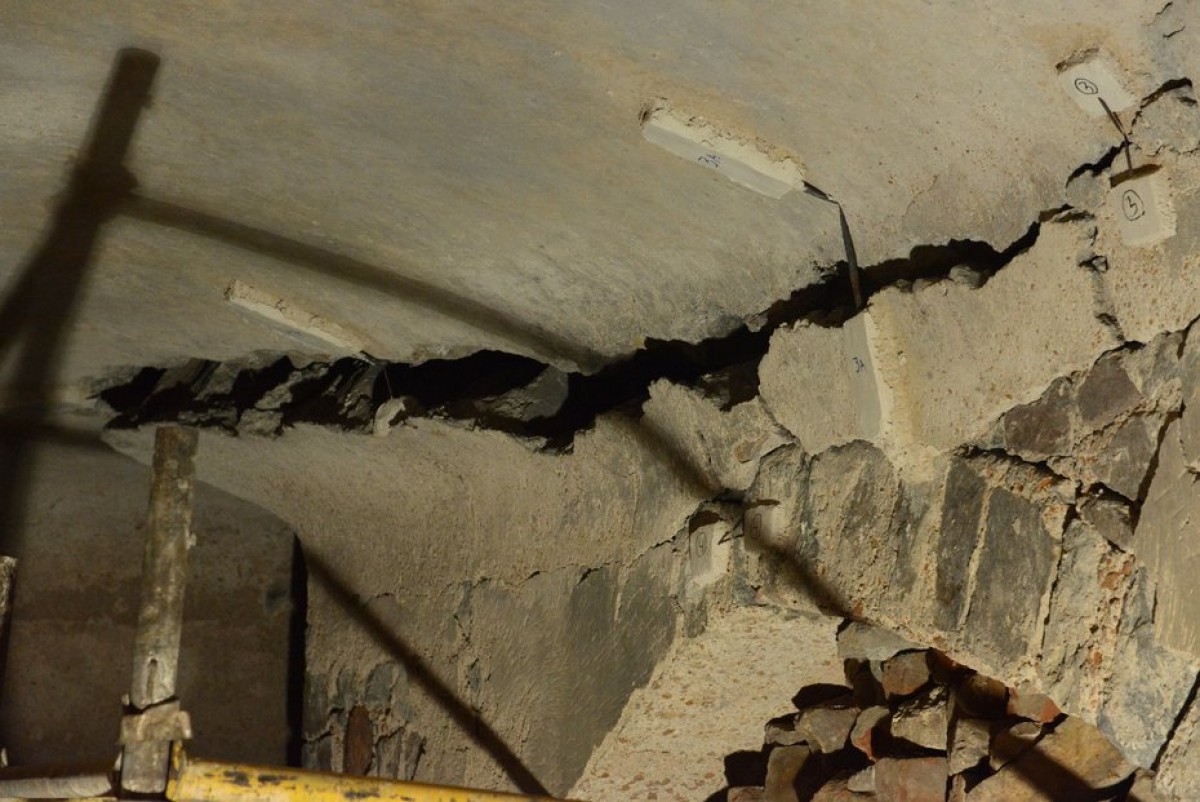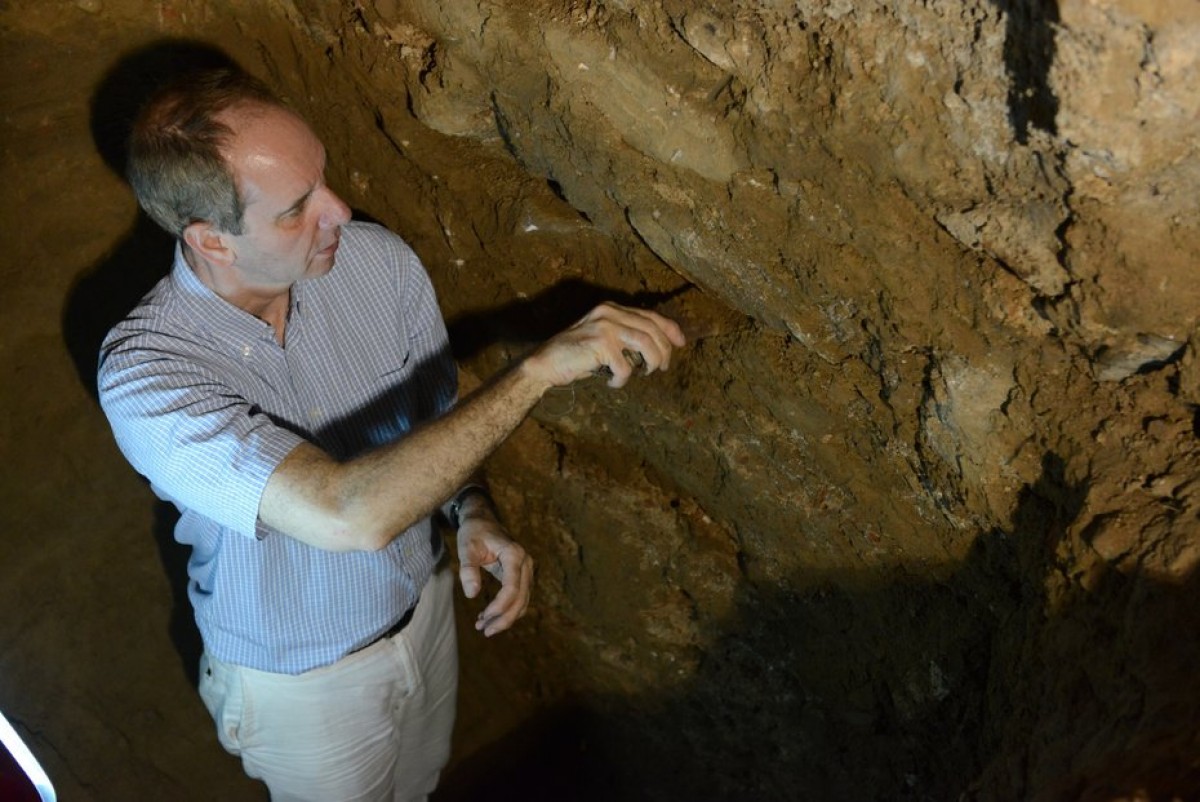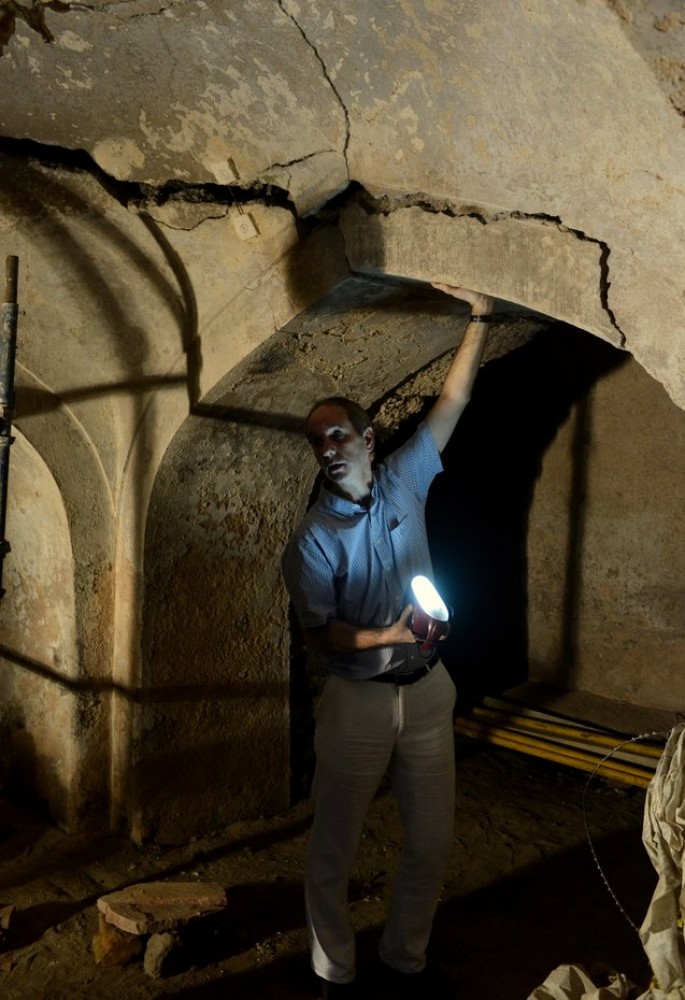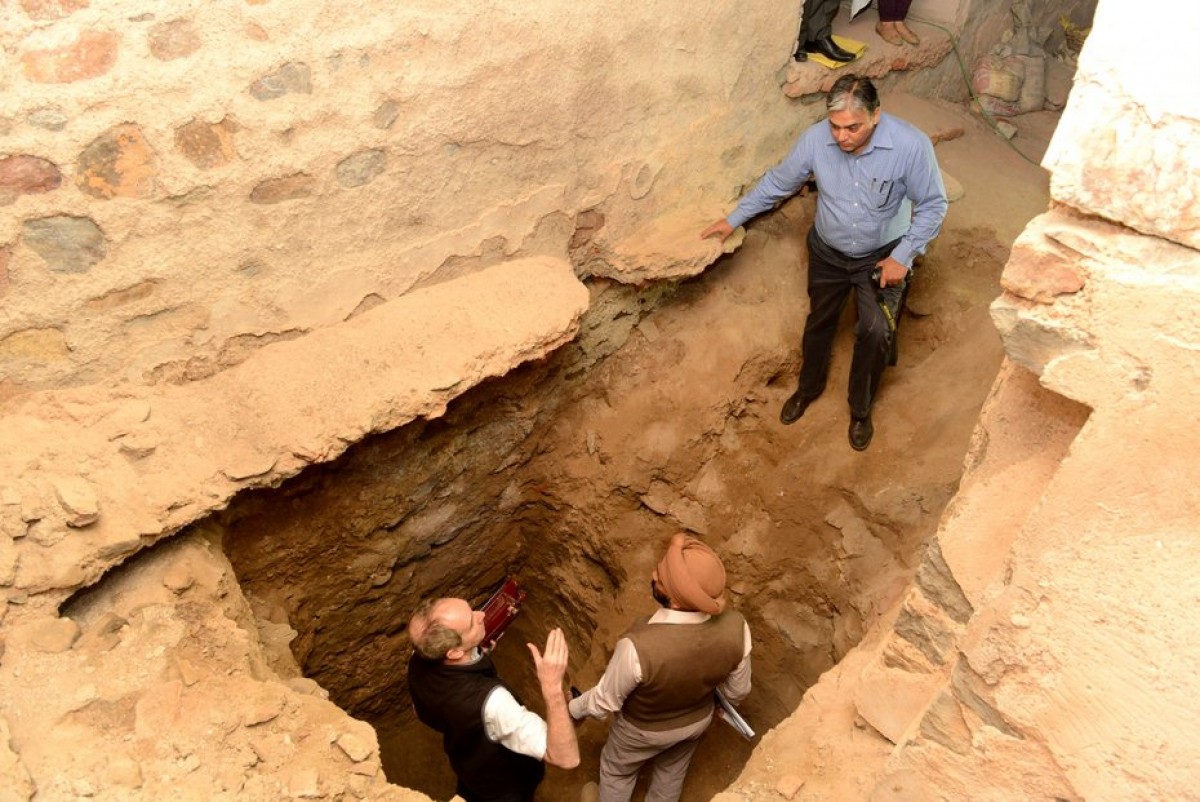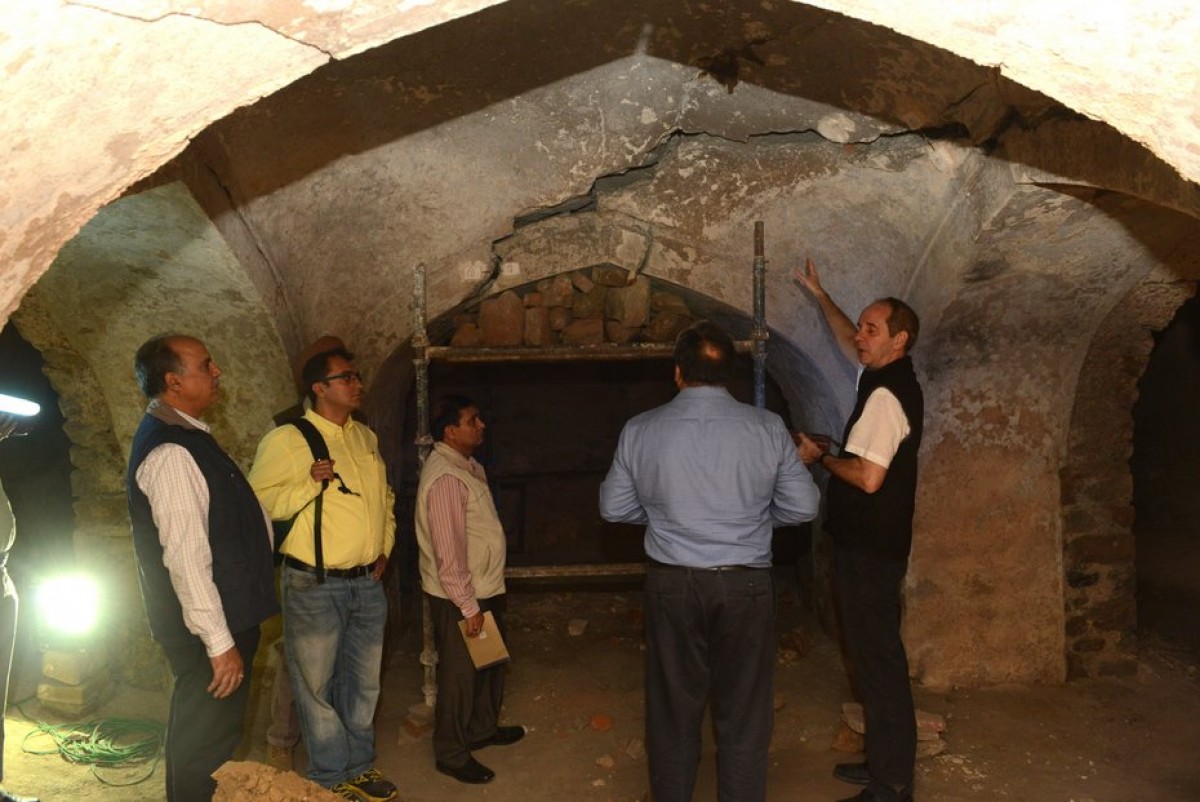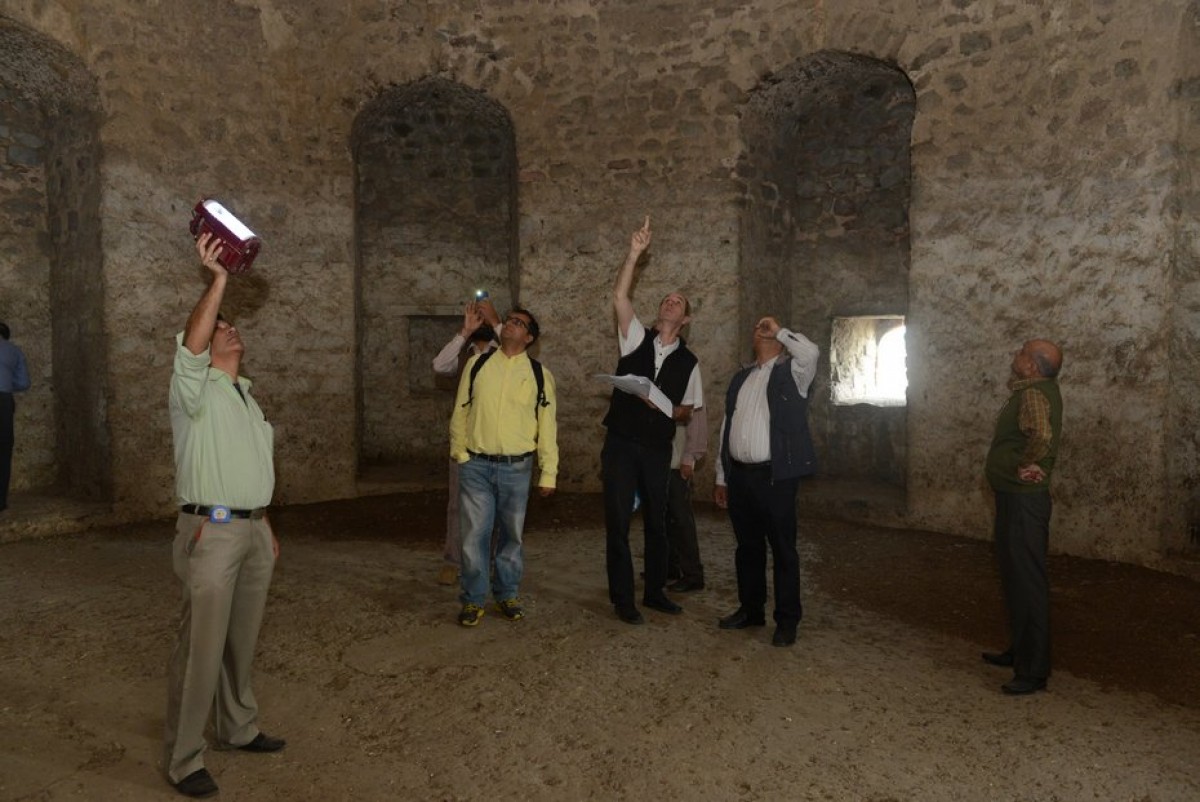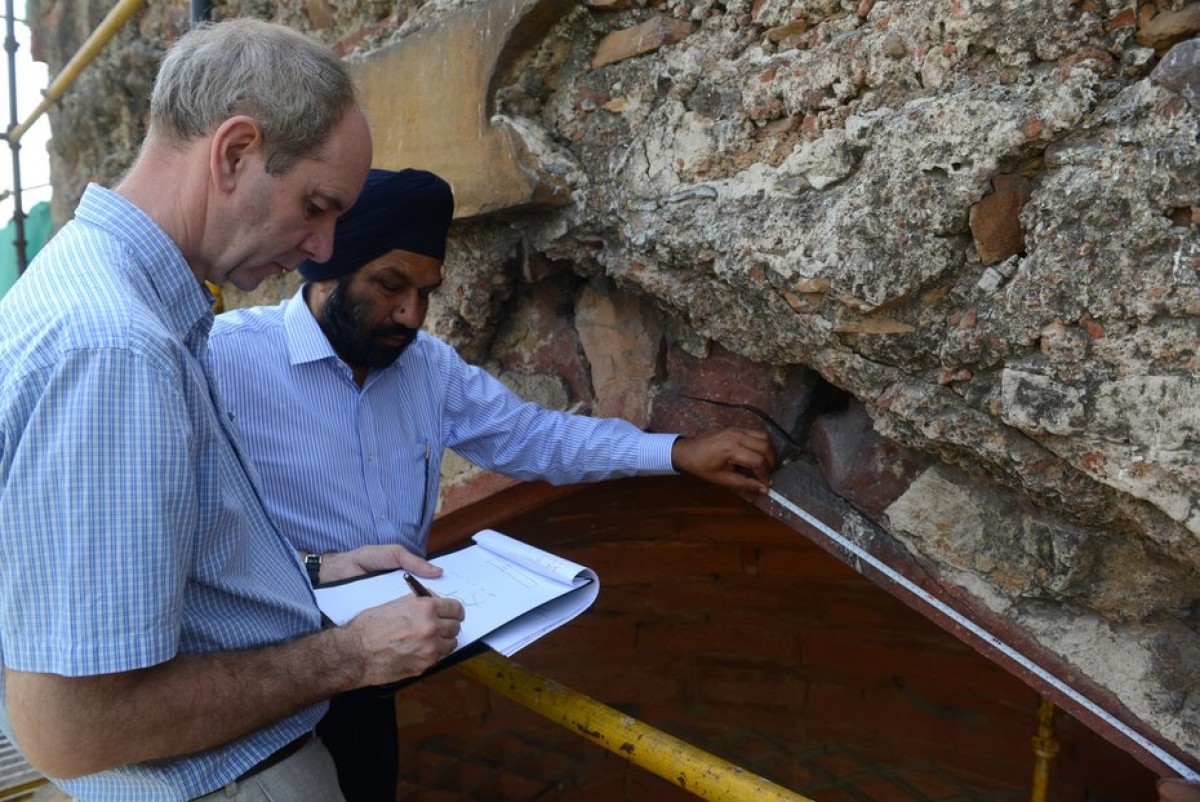
-
0mm wide cracks stitched
Prior to the commencement of any conservation works an appraisal of the structure was carried out and evaluated. The main area of structural concern was the cracks to the masonry vaults and arches within the crypt. The size and position of the cracks indicated a high risk of collapse. Trial pit investigations were carried out which indicated a differential settlement of the foundations of the piers of the crypt. Large, continuous cracks could be seen in the masonry vault around the top of the four piers and cracks in the masonry arches between the piers.
The principal reason why failure has occurred to the crypt, and not the main structure, is that the crypt foundation is shallower than the main walls of the mausoleum. As there was a risk of further movements this area was monitored by installing “tell-tales” and readings were recorded at fortnightly intervals for a period of 6 months. There was no or negligible movement noted, even after two tremors in April 2015. There were a number of areas of cracked and spalled stonework due to corrosion of iron cramps built into the masonry. Without repairs to these areas there was a high risk of stones falling from high level.
The structural assessment was necessary to arrive at a conservation solution with a thorough understanding of the existing structure and its potential structural issues. Conservation based repairs were developed that used appropriate materials and techniques, working with the existing structure, while maintaining maximum amount of historic fabric.







